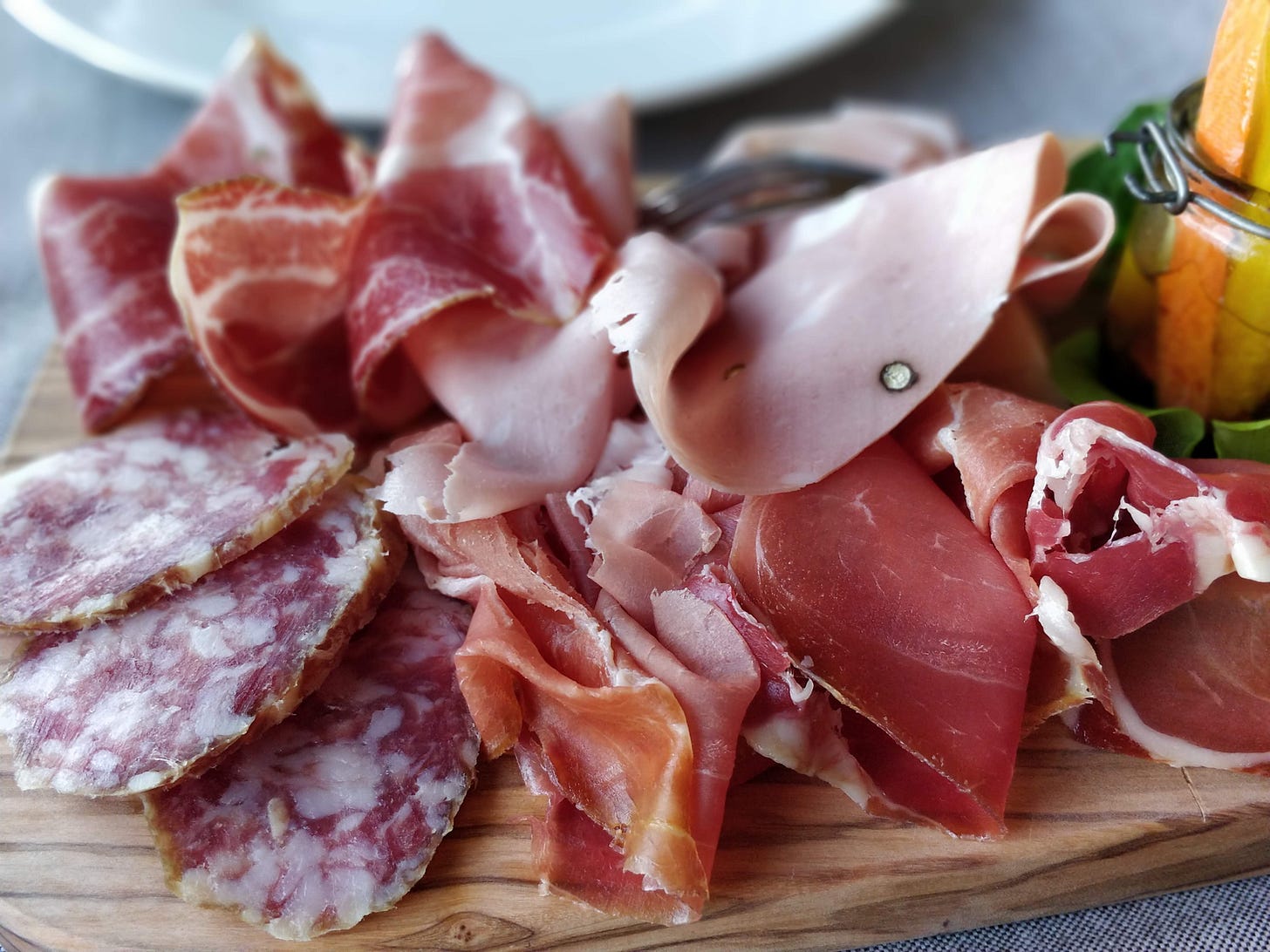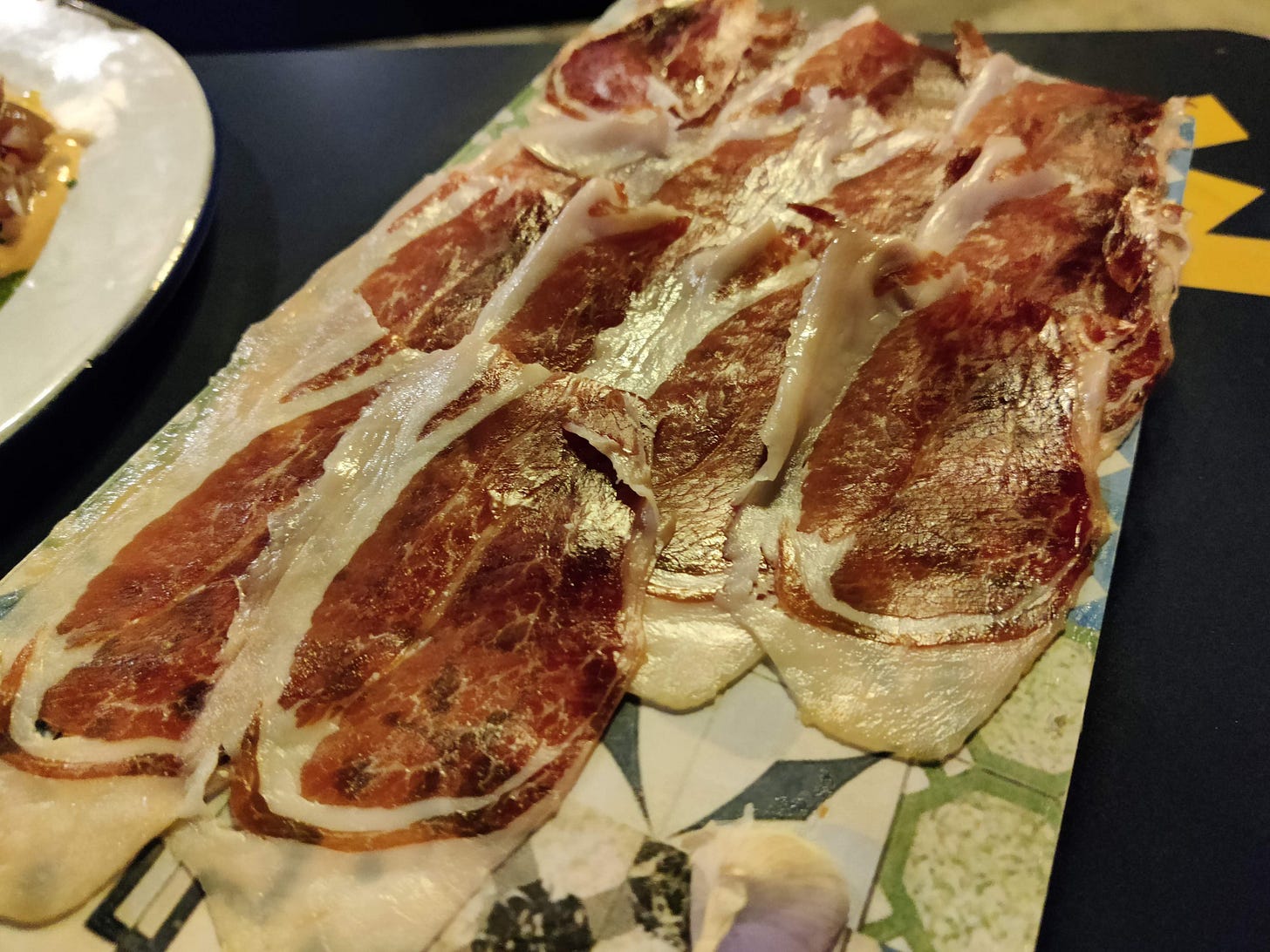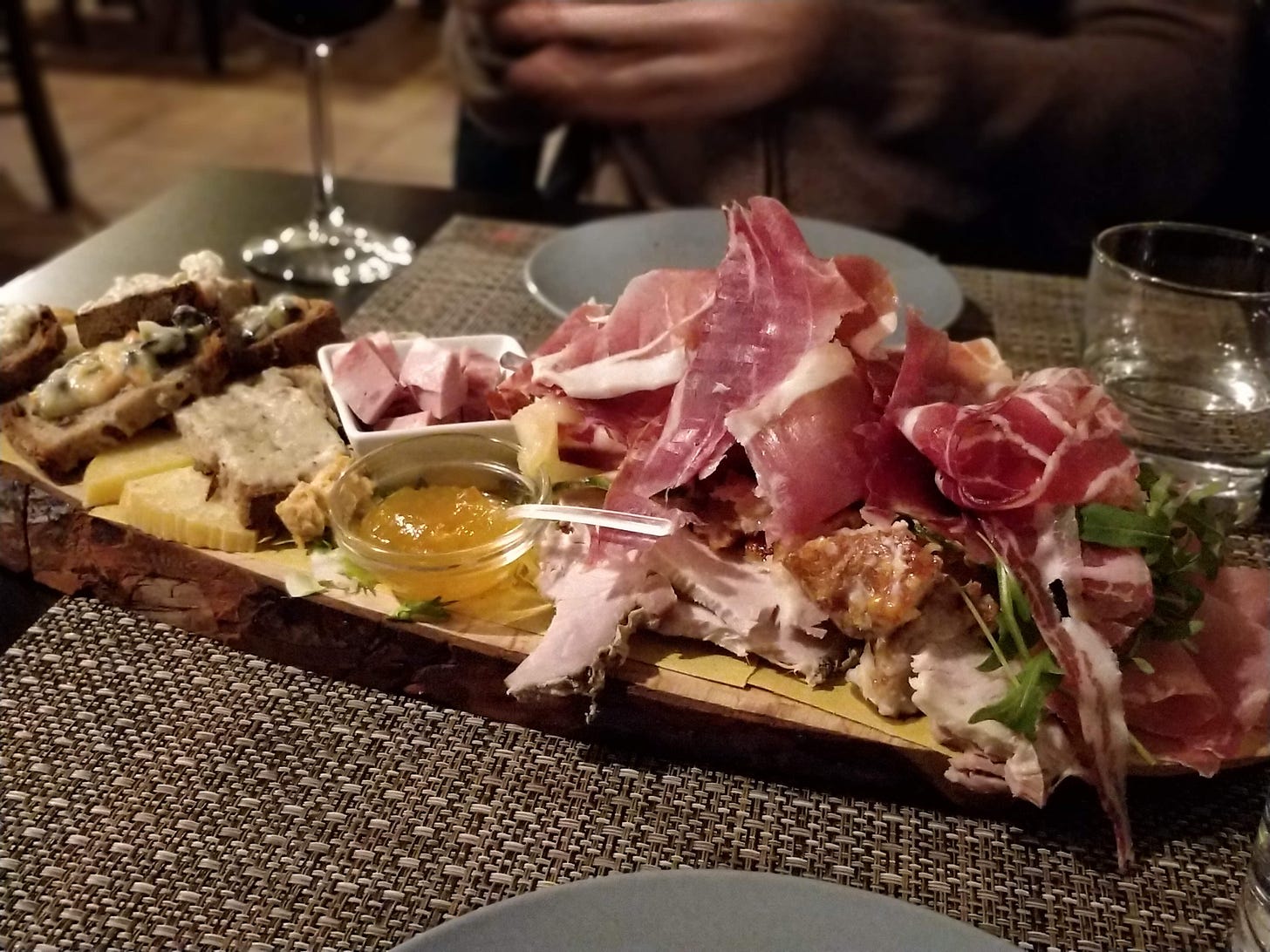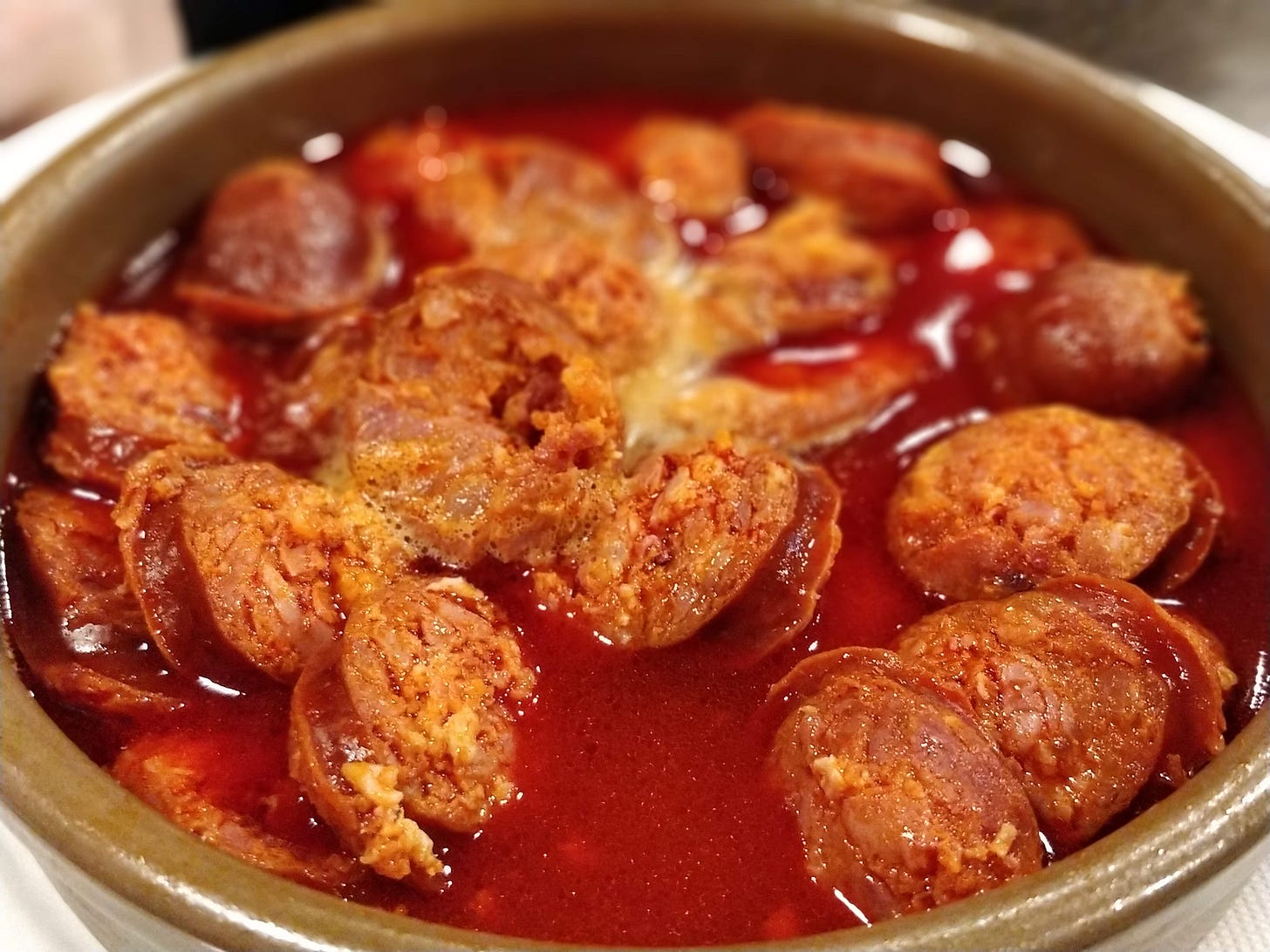Ham-fisted
A newsletter about food systems, climate change and everything connected to them
Apologies - couldn’t resist the pun, even if it isn’t the most accurate title!
If you, like me, are a big fan of jamón, chorizo, morcilla, this issue is going to be a difficult read.
But it’s also a necessary read, because I think it’s important that consumers like us who love these products - and the traditions that come with them - know the conditions in which they are produced, and become part of the solution.
What is this about?
Since summer, I’ve been working with a group of super-talented Spanish journalists who set about to uncover what is going on in the Spanish pork sector, particularly the terrible labour exploitation in slaughterhouses and the environmental degradation.
The investigation was overseen by the Netherlands-based non-profit newsroom Lighthouse Reports.
As is often the case with these investigations, we couldn’t include all the work and findings into the stories that came out in various national and international papers in October.
However, with the support of the Open Society European Policy Institute, I was able to bring a lot of the findings together into a 37-page report that dismantles the myths being perpetuated by the industry.
We spoke to more than 60 people in the industry, ranging from slaughterhouse workers and pig farmers to vets, doctors, academics and officials.
But first…
Let’s make one thing clear. The report is neither an attack on much-loved - and delicious - Spanish pork products nor about taking away your right to eat them. In fact, we are saving two packs of our favourite chorizo we bought in Barcelona in the summer for rainy days.
It’s also not questioning the long and deep culinary and cultural history of pork in Spain which dates back to 711 A.D. when the Moors, whose religion forbade consuming pork, swept through Spain and consuming the meat became a way of ‘affirming one’s Catholicism’.
It’s about how parts of the Spanish pork sector, specifically the industrialised part, is built on practices that exploit workers, pollute the environment, mistreat animals and put short-term private profits above long-term social, economical and environmental health.
So about those myths?
We broke them down into four main parts.
Myth 1 - Spain’s pork industry provides decent, well-paid jobs.
Reality - Employees, particularly those in slaughterhouses and cutting plants, face long hours, low pay, very few rights, high rates of accidents, lots of both visible and invisible injuries, cramped living and working conditions, verbal and physical abuse and harassment.
Efforts to form unions are agrressively and those who speak out often face backlash, either in the form of demotions or firings. Some faced death threats.
Unsurprisingly, a vast majority of these workers are migrants from Africa.
Myth 2 - Spain’s pork industry is based on small, artisanal firms, creates large numbers of quality jobs in rural areas and reverses population decline.
Reality - Large firms dominate the market. Industrial farms are so heavily mechanised they don’t need many people to manage them.
The industry says it is a solution to the specter of “emptied Spain” (la España vaciada), referring to the landlocked rural interior whose population has been declining over the past 50 years.
But many rural areas with intensive pig farms actually have lost more population and have higher unemployment than those that don’t have this type of farm. Spanish environmental group Ecologistas en Acción has documented this in detail. (Tip: Turn on the translation on Chrome/Firefox)
Myth 3 - Spain’s pork industry is a model of sustainable production.
Reality - Industry practices are heavily polluting and the animals live in substandard conditions.
Pig slurry, a mixture of faeces, urine, food waste and other discharges, is the biggest environmental problem from industrial pig farms just because there are so many animals concentrated in these spaces.
Such farms typically produce around 2,000 litres of slurry per animal per year and the nitrogen concentration here is 40 times higher than that of wastewater.
This result? Nitrate pollution of groundwater, ammonia pollution of surface water, and methane emissions into the air. Many Spanish towns and rural communities are either facing chronic water shortages or having to drink polluted water.
We looked at the degradation of Mar Menor, Europe’s largest saltwater lagoon, as an example and found industrial pig farms may have played an important role in causing a vast amount of fish in the lake to die this summer.
We also visited some randomly selected pig farms in the region of Castilla y León and found animals with terrible wounds. We spoke to pig farmers and vets about the terrible conditions in which the animals are forced to live. You can see images we took in the twitter thread below.
Myth 4 - Spain’s pork industry is a financial success story.
Reality - I’m sure you could guess where this is going, but the fact is, the industry as it is would not exist without public funding and political support.
Advocacy groups say 55% of the price of a kilo of pork meat subsidised. Support for the industry through the EU Common Agricultural Policy (CAP) comes up to around €160 million a year since Spain joined the EU, according to one research.
EU data showed that in 2019, each pig and poultry farm received nearly 7,400 Euros. I’ve written about the CAP before. In case you want a refresher, here they are.
Are there any positives?
Well yes. I’ll give two specific examples.
1. Communities across Spain who have seen the downsides of industrial pig farming on people, animals and the environment are joining a growing resistance movement, and some workers are fighting back by taking unscrupulous employers to court.
2. The EU’s new CAP framework, which will begin in 2023, will incorporate “social conditionalities” to ensure transparent and predictable employment conditions, and on-farm safety and health standards.
These rules will become mandatory in 2025. They don’t cover slaughterhouse workers because it’s only for food production but it’s a good step.
Are the report’s findings representative?
Heck yes.
We spoke to workers employed by subsidiaries of and companies linked to some of Spain’s largest meat companies.
We interviewed union representatives, doctors, academics and officials who have seen and/or documented the abuses these workers have suffered.
We met politicians, community leaders and ordinary people who are suffering the externalities caused by the explosive growth of pig farming.
We visited the farms and saw the conditions in which the animals were living.
We are not the first nor will we be the last to point out how exploitative and inhumane the system is. There is ample evidence and documentation on the terrible treatment of not just slaughterhouse workers but also gig-economy employees, agricultural labour, etc, and not only in Spain but in many parts of the world.
So yeah, the findings are representative. The problems are systemic and widespread.
I firmly believe the onus shouldn’t be purely on consumers to know which companies are good and which ones are bad, but we can be better informed and we can push for legislation to be put in place to stop the abuse and exploitation.
And for those of us who can afford it, we can choose to vote with our wallets so that good practices become the norm and not the exception.
Further readings & viewings
1. The report is called How Clean Are Europe’s Food Supply Chains?
It’s not very long and I’ve tried to make it as readable as possible so I hope you do find the time to at least flip through it.
2. Our report came hot on the heels of “Emissions Impossible Europe”, from the Institute of Agriculture & Trade Policy (IATP), which found that combined emissions of the 20 largest meat and dairy companies with headquarters in the European Union (EU) and Switzerland is higher than that of the Netherland’s total emissions and more than half of UK’s emissions.
3. Really good data piece from Datadista that covers similar ground on Spanish pork (Tip: Turn on the translation on Chrome/Firefox)
4. If you have 83 minutes to burn, here’s the launch event.
As always, have a great weekend! Please feel free to share this post and send tips and thoughts on twitter @thinink, to my LinkedIn page or via e-mail thin@thin-ink.net.









